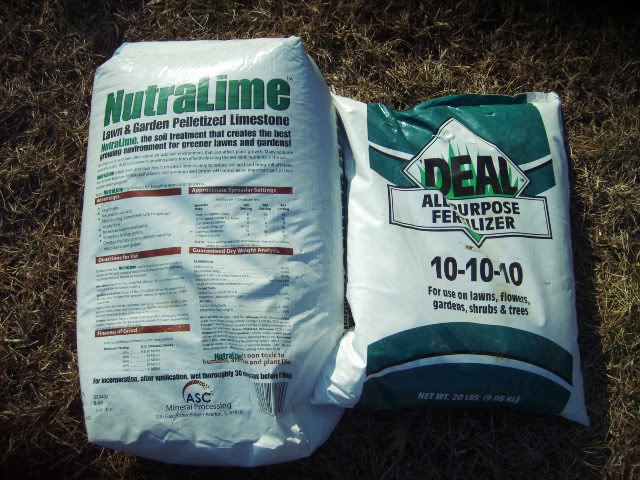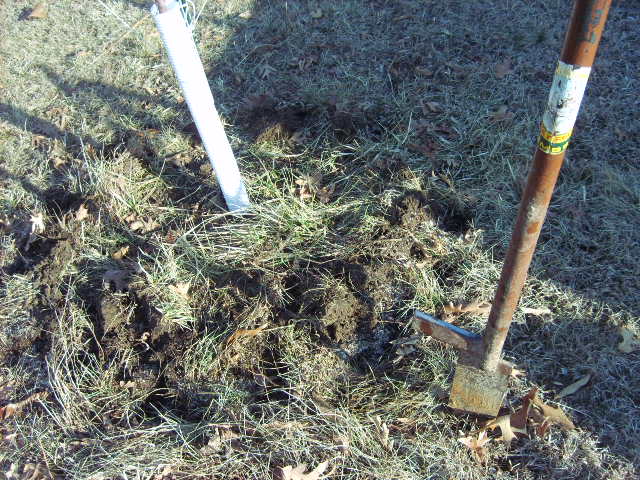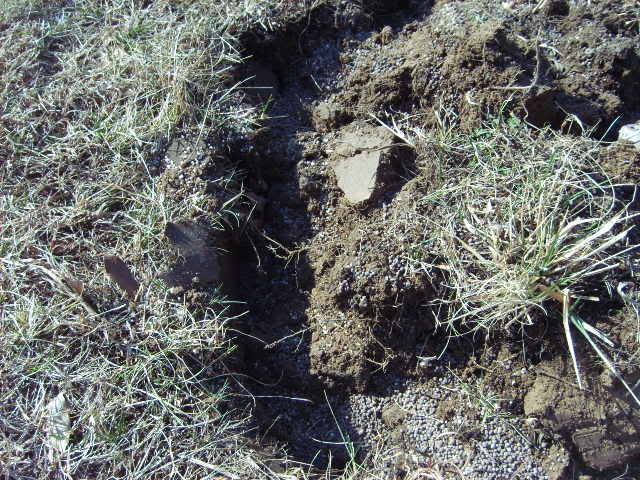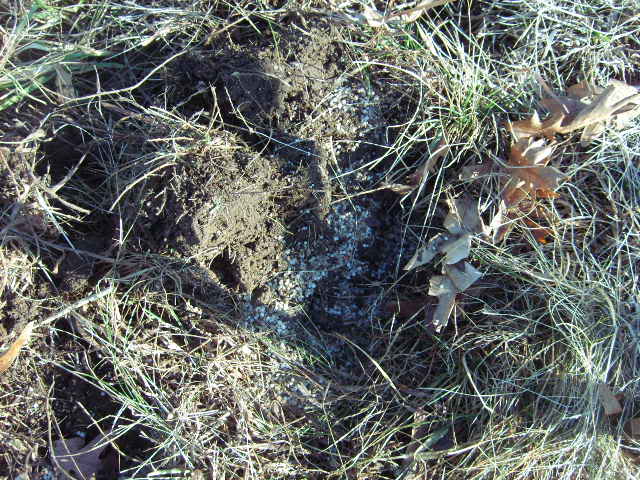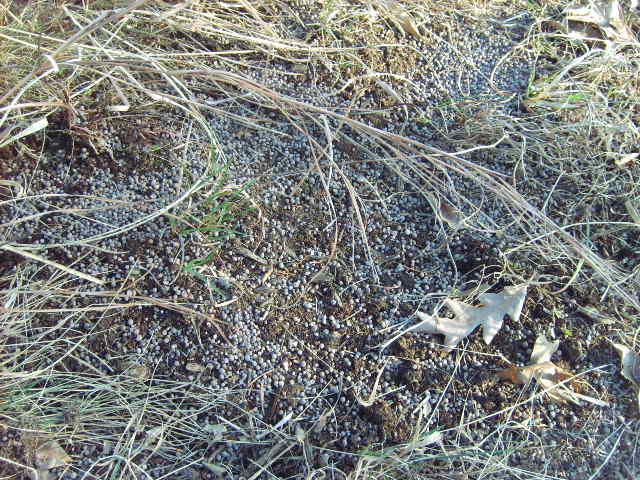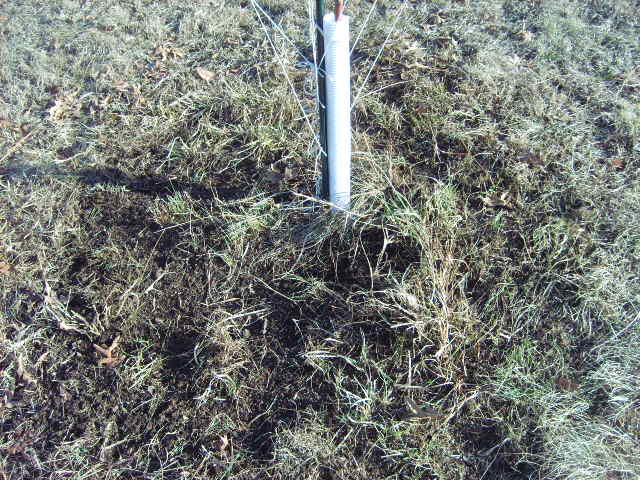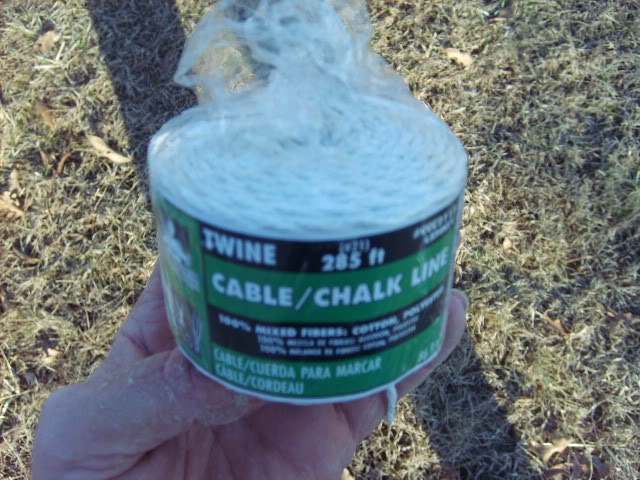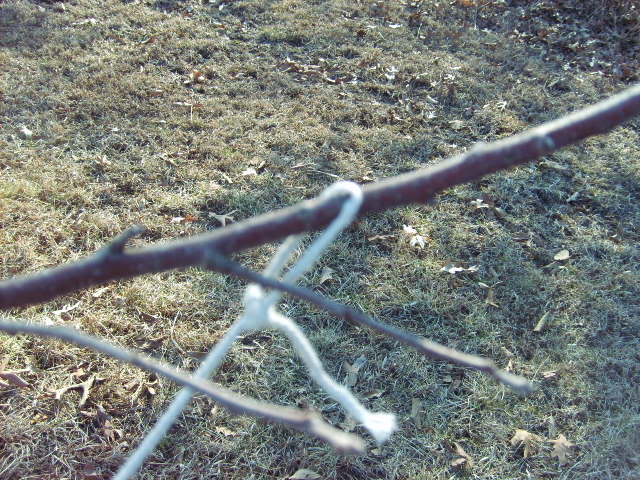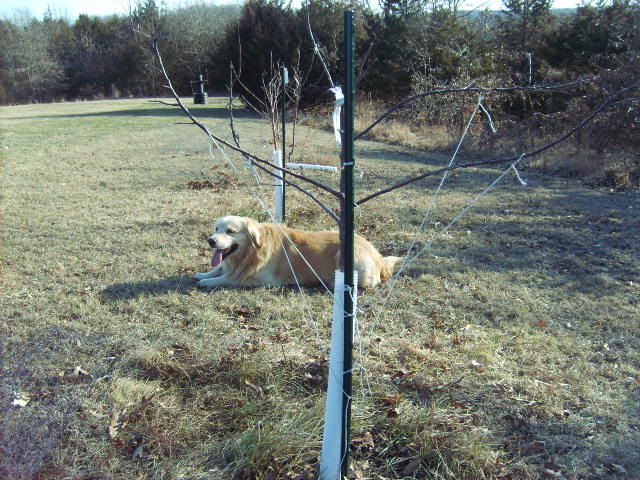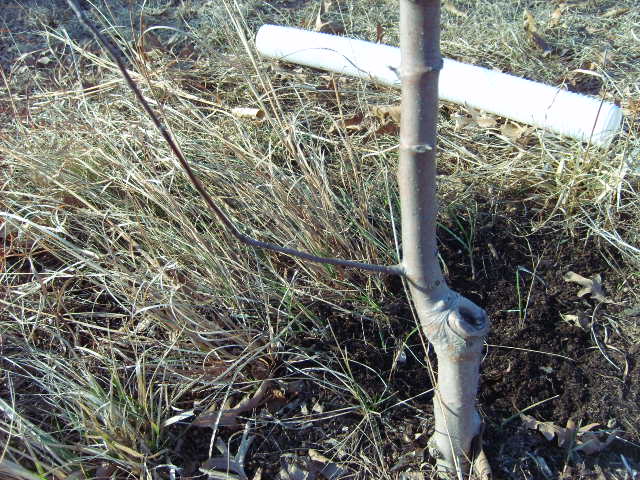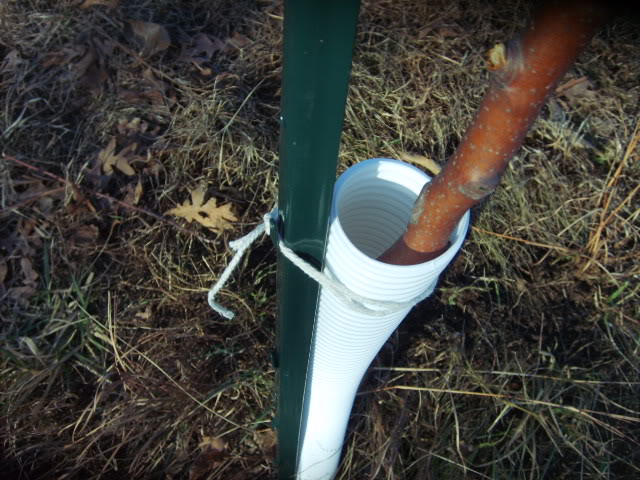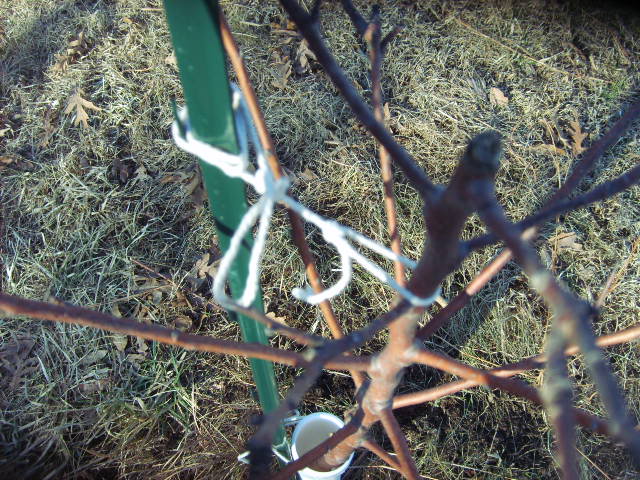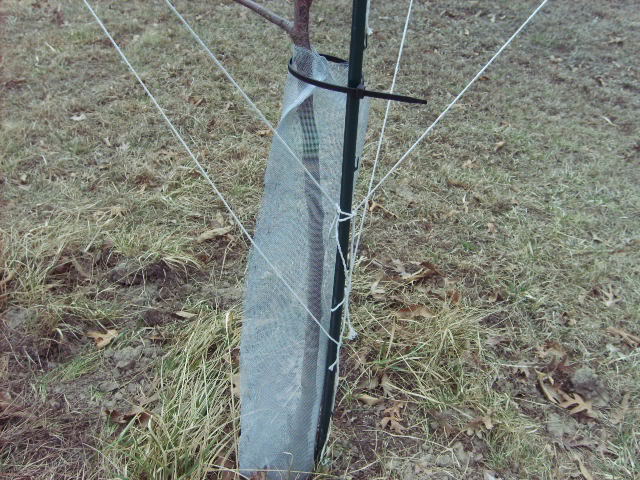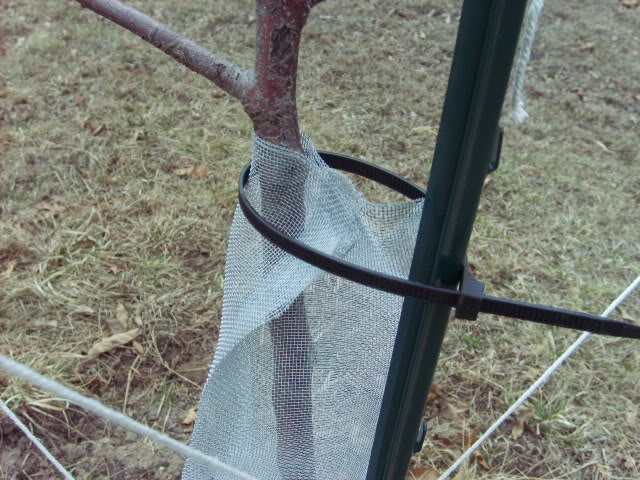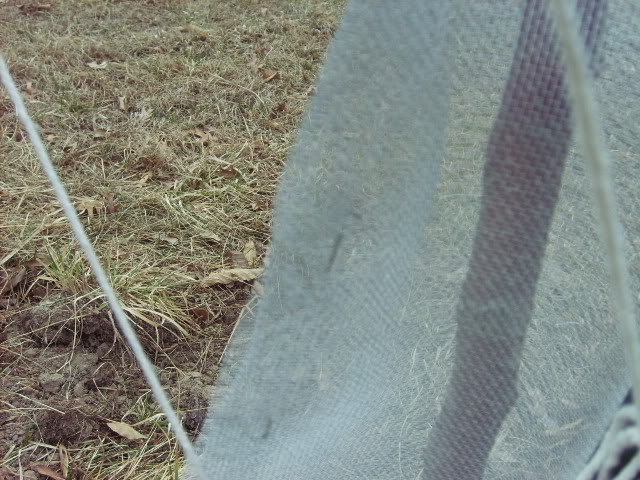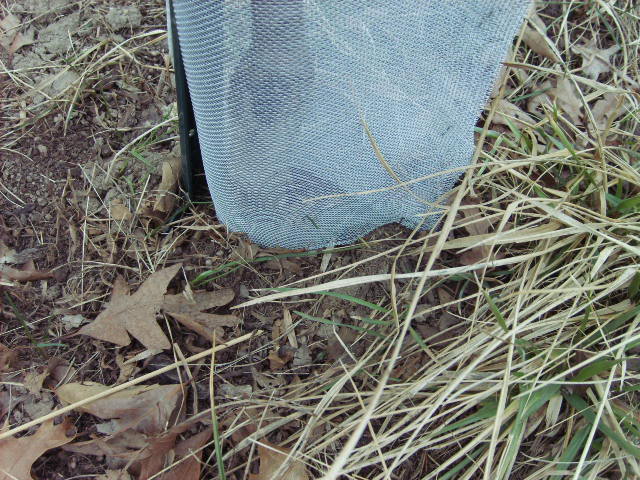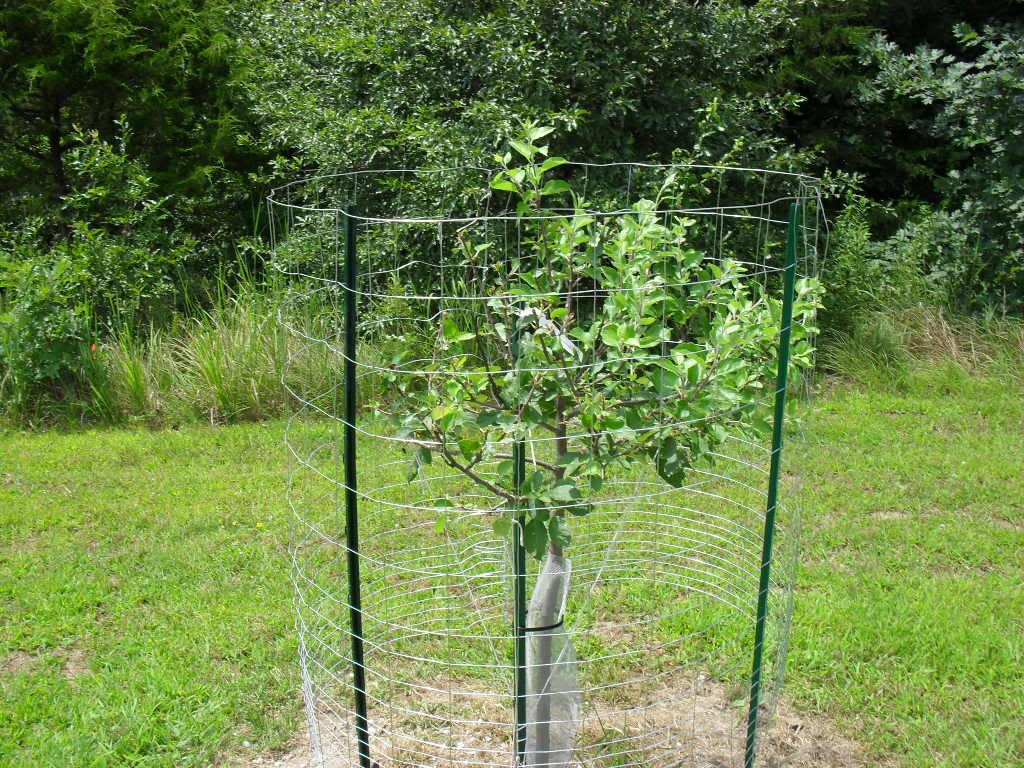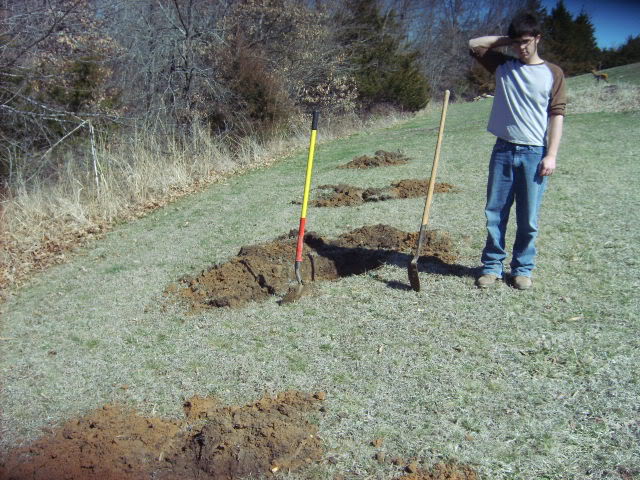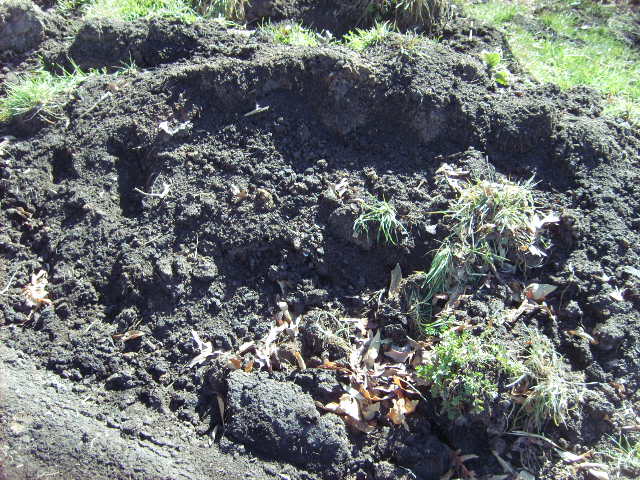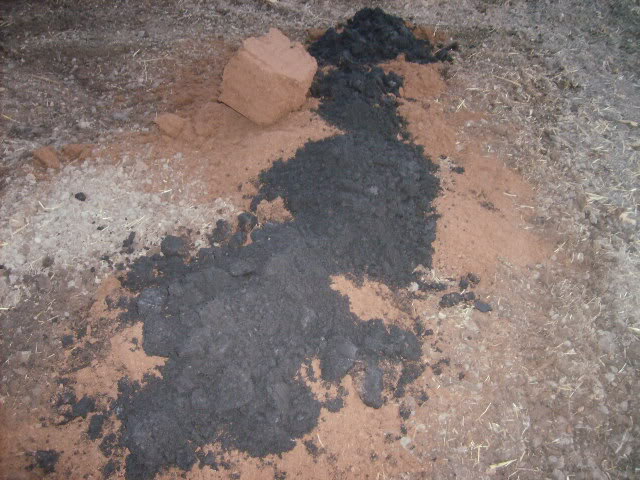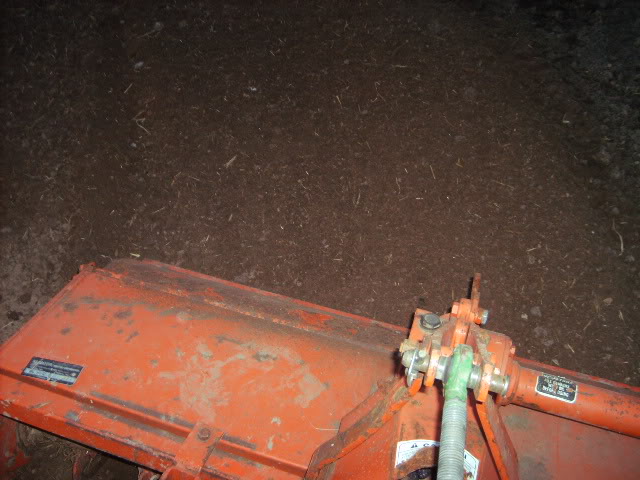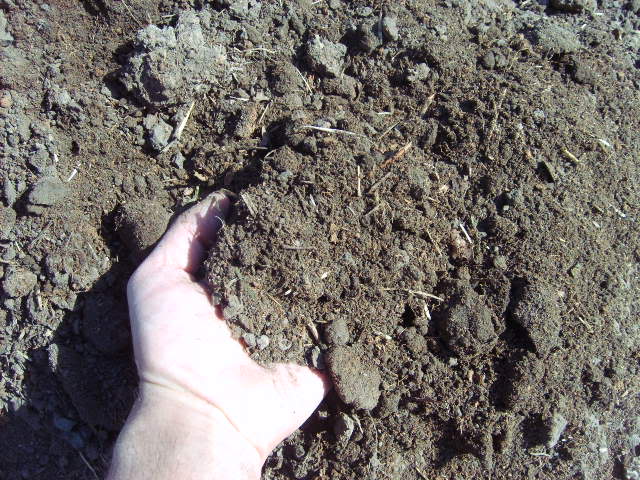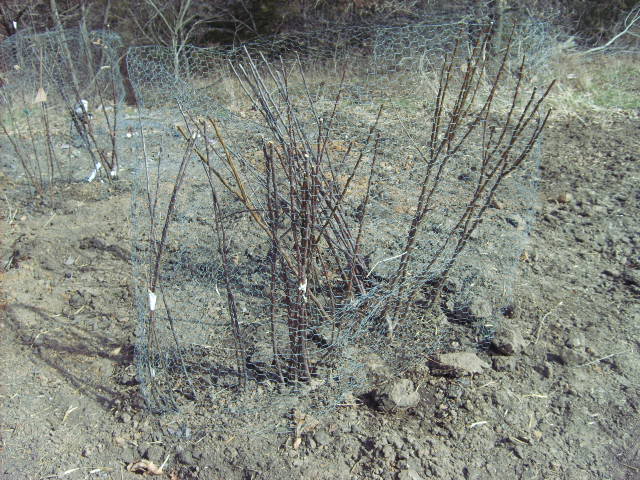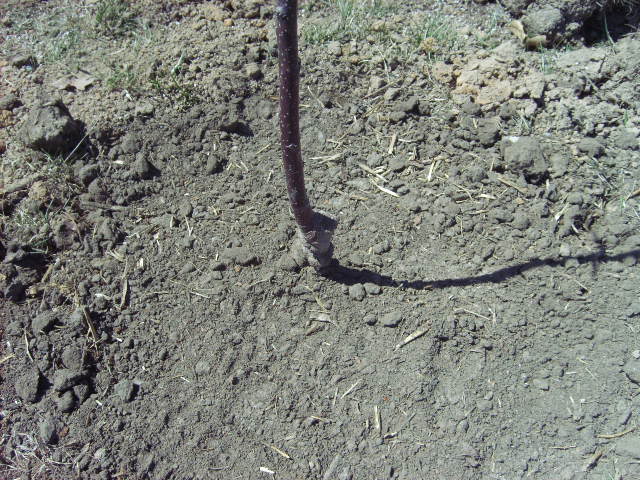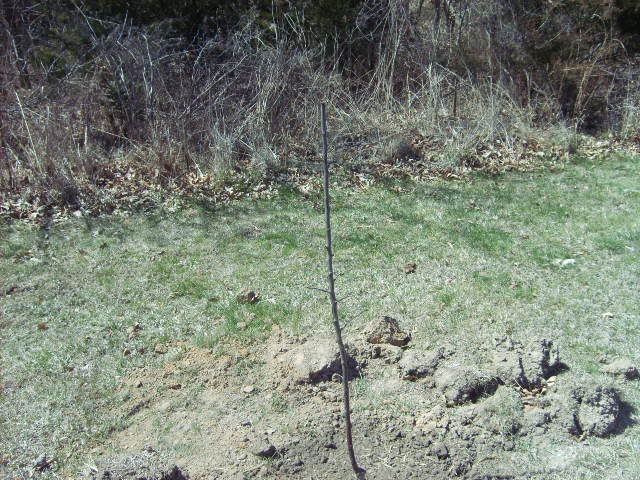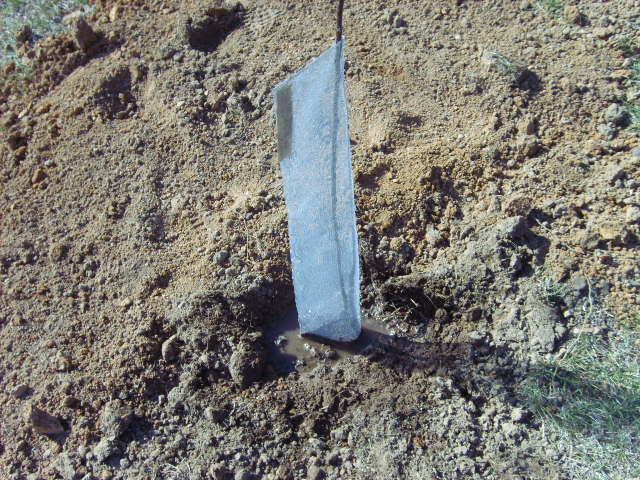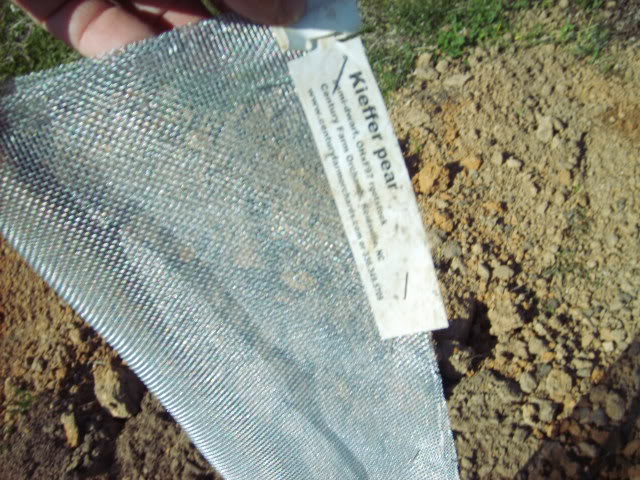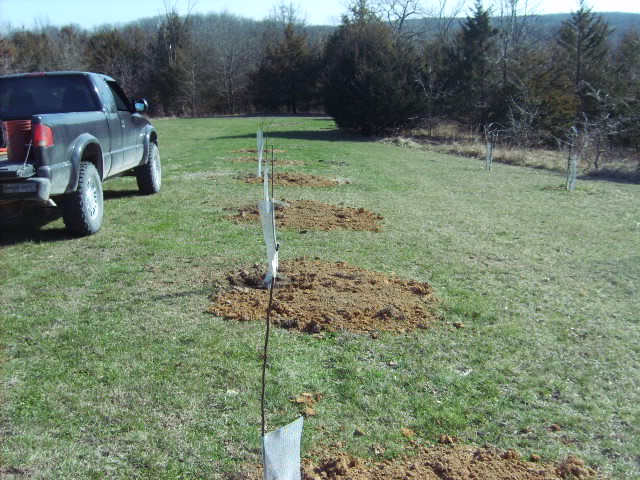Fruit Tree sources
Apples and pears are just a lot of fun and you can plant a couple every year without breaking the bank and eventually end up with a great attraction! Here's a list of fruit tree sources
Adams County Nursery
Century Farm Orchards
Cummins Nursery
Burnt Ridge Nursery
St. Lawrence Nursery
MILLER NURSERIES
Stark Bro's Nurseries and Orchards Co.
Raintree Nursery
Grandpa's Orchards
Burgess Seed and Plant
Red Fern Farm
Morse Nursery
Edward Fort Nurseries
The Wildlife Group
Vintage Virginia Apples
Boyer Nurseries & Orchards, Inc
Trees of Antiquity
Gurney's Nursery
Arbor Day Foundation
NAFEX Nursery/Supply Source Lists
Tree Selection
Which tree is right for you? Standard, semi-dwarf or dwarf?
Most landowners planting for wildlife prefer semi-dwarf but here are a few links to help you deicde what is best for you.
Guide for Home Orchards
Dwarf versus Semi-Dwarf versus Standard Trees
WHICH APPLES SHOULD I CHOOSE?
All about Apples
It's all about the rootstocks:
Standard Trees versus Dwarf Trees
The two major factors influencing size are rootstock and type of strain used (spur or non-spur). Other factors that will have an influence on ultimate tree size include general care, variety, soil type, earliness of fruiting, location within the state and timing and severity of pruning.
Rootstock influences tree size. There are three general categories of tree size: standard, semi-dwarf and dwarf. Standard trees are propagated on seedling rootstock and produce large trees that may get to be 15 to 20 feet tall. Semi-dwarf trees are trees propagated on one of several clonal rootstocks (vegetatively propagated) that produce trees that will be about 60 to 70 percent the size of standard trees if grown under similar circumstances. The most common semi-dwarf rootstocks used for apples in Georgia are MM 106, MM 111, and M 7. Trees on M 7 will produce the smallest trees in the semi-dwarf category while MM 106 will produce trees nearly as large as trees on seedling rootstocks.
True dwarf trees will be about 30 to 40 percent as large as standard trees and require support by either a trellis or a post. The two most common dwarfing root-stocks are M 9 and M 26. Trees grown on M 9 are the smaller of the two.
Use dwarf and semi-dwarf trees if space is greatly limited. M 9, M 7, and MM 111 are better adapted to Zones 1, 2, and 3, while MM 106 has shown promise in the lower half of Zone 3 plus Zone 4. In Zone 5, only standard trees (seedling rootstock) are recommended due to poor performance of semi-dwarf and dwarf rootstocks. See Table 2 for tree spacing recommendations.
Dwarf rootstocks are not as strong as semi or standard but you can fence them and stake them of course.
For best results order trees on M7 or M111 rootstock, they produce a strong, sturdy, freestanding tree that is winter hardy and tolerant of a variety of soil conditions. All apple trees (fruit trees) are grafted to various rootstocks and we need to match the rootstock to the soil/growing conditions in our areas and soil types.
M111 rootstock is a slightly larger rootstock that works well in the heavy clay soils in my area and works much better then dwarf rootstock.
Here's some basic rootstock info from
Adams County Nursery
Apple Rootstocks
The use of clonal rootstocks for apples began in the mid 1900's. Selections from the East Malling Research Station, Kent, England were introduced to commercial fruit production as a means to control tree vigor, promote early fruiting, and improve tree efficiency. The widespread acceptance of this technology led the way for rootstock breeding in the United States, Poland, and the former Soviet Union. The M and EMLA rootstocks from East Malling, the Bud rootstocks from the former Soviet Union, and more recently, the G rootstocks from Geneva, New York have become the most commonly used rootstocks for apple production in the United States and throughout the world.
M-9 (337)
A dwarfing rootstock, ideal for high density plantings. M9-337 is a virus certified clone of the original Malling 9 and has been used successfully throughout the world. Trees on M9-337 are very precocious and tolerant to a wide range of soil and climate conditions. Due to the poor anchorage of this rootstock, tree support is essential in establishing trees.
M9-NIC 29
A selection of Malling 9 developed in Belgium. M9-Nic29 is recommended for use with cultivars that are less vigorous such as Empire or Honeycrisp. M9-Nic29 has slightly more vigor than other clones of Malling 9 yet is similar in other horticultural characteristics.
BUD 9
A dwarfing rootstock producing a tree similar in size to M-9. Bud 9 is very winter hardy, resistant to collar rot, and somewhat less susceptible to fire blight than M-9. Tree support is recommended when using this rootstock.
GENEVA 16 (G.16)
A dwarfing rootstock developed from a 1981 cross of Ottawa 3 and Malus Floribunda. Geneva 16 produces a tree similar in size to trees on M-9 clones. Its desirable characteristics include high yield efficiency, resistance to burrknots and root suckers. Geneva 16 shows strong resistance to fire blight and some tolerance to apple replant disease.
EMLA 26
Ideal for high density plantings, EMLA 26 produces a dwarf tree between M-9 and EMLA 7. Free standing on strong soils, EMLA 26 usually requires staking on less fertile sites. EMLA 26 does not tolerate wet feet and is susceptible to fire blight and woolly aphids.
M-9 / EMLA 111 INTERSTEM
The interstem M-9 / EMLA 111 produces intermediate trees similar to EMLA 26. Advantages include a well anchored, collar rot resistant EMLA 111 tree, with the dwarfing and precocity of the M-9 interstem.
GENEVA 30 (G.30)
Developed from a 1974 cross of Robusta 5 and Malling 9, this rootstock produces a tree slightly less vigorous than trees on EMLA 7. Geneva 30 has extremely high yield efficiency, and when allowed to carry large crops in the early years, may be similar in size to trees on EMLA 26 rootstock. Geneva 30 is very resistant to fire blight and exhibits some tolerance to apple replant disease.
EMLA 7
The most widely-planted free-standing semi-dwarf rootstock to date. EMLA 7 trees exhibit an open spreading-type growth similar to peach trees in size. The trees are well anchored, hardy, and size fruit well in a dry season. EMLA 7 has a tendency to rootsucker when not planted deep.
EMLA 106
Somewhat larger than EMLA 7, the EMLA 106 is better anchored. Resistant to woolly aphids, it seldom rootsuckers, and performs best on dry sites. It is extremely susceptible to collar rot and should not be planted in wet sites or heavy clay soils.
EMLA 111
A vigorous semi-dwarf, EMLA 111 produces a tree somewhat larger than EMLA 106. Trees are well anchored, resistant to collar rot and woolly aphids. A good selection for heavy, poorly-drained soils.
Top 6 Apple Varieties for Whitetails and Wildlife
Honeycrisp:
Extremely winter hardy to -40F. Bears fruit at a very young age and produces heavy annual crops at 5 years.
Liberty:
Hardy, vigorous and spurred (fruit buds develop along the shorter lateral branches along the limbs). Liberty blooms early in the season so is susceptible to late season frost. Fruit stays on the tree well after maturity and has very heavy annual bearing habit. Less cold tolerance than Honeycrisp (-20F).
Honeygold:
Produces a large yellow apple that is highly preferred by deer. Somewhat bi-annual (alternates years of strong and weak crops) if heavy crop years are not hand thinned. Very winter hardy, early producer and holds apples well.
Enterprise:
Extreme resistance to most major apple diseases. Blooms much later than Liberty and thus is less likely to experience late frost damage.
Jonafree:
A very firm, scab-resistant variety that tends to be small but bears very well. Cold tolerant to -20F.
Empire:
Susceptible to scab but serves as a good pollinator. Ripens in mid-October in northern Vermont. The apple remains firm and stays very well on the tree. Not recommended for warmer, humid regions due to its susceptibility to scab
Grimes Golden - Ripens Sept./Oct.
Rome - Ripens Sept./Oct.
Stayman Winesap - Ripens Oct.
Blacktwig - Ripens November
York - Ripens in Oct.
This is a list of Disease Resistant Varieties in order of Ripening (Early to Late) that ACN carries
Pristine (apple) - July 10
Redfree (apple) - August 5
Initial (apple) - August 20
Seckel (pear) - August 28
Blake's Pride (pear) - September 2
Magness (pear) - September 5
Potomac (pear) - September 9
Liberty (apple) - September 15
Crimson Gold (apple) - September 15
Crimson Topaz (apple) - September 18
Galarina (apple) - September 25
Freedom (apple) - October 1
Nova Spy (apple) - October 10
Querina (apple) - October 12
Enterprise (apple) - October 24
GoldRush (apple) - November 10
Hardy Cumberland (apple) - November 15
The following is a list of disease resistant apples Ben shared
Akane
Alkmene
ANTONOVKA KAMENICHKA
Chehalis
Crimson Gold
Crimson Topaz
Dayton
Enterprise
Florina Querina
Freedom
Galarina
Goldrush
Hardy Cumberland
Initial
Liberty
Lib Del
Murray
Novaeasygro
Novaspy
Ny 75414-1
Priam
Prima
Pristine
Redfree
Richelieu
Scarlett O'Hara
Sir prize
Williams' Pride
Wolf River
This list is in order of ripening, early to late
Yellow Transparent - July 2
Yellow Transparent Perrine - July 2
Lodi - July 4
Pristine - July 10
Redfree - August 5
Ginger Gold - August 12
Zestar! - August 15
Dandee Red - August 15
Sansa - August 15
Initial - August 20
Mollies Delicious - August 22
Summer Mac - August 22
Summer Rambo - August 25
Jonamac - August 26
Star Gala - August 26
Fulford Gala - August 26
Scotian Spur Macintosh - September 1
Buckeye Gala - September 2
Crimson Gala - September 2
Gale Gala - September 2
Marshall McIntosh - September 5
Linda Mac - September 5
Honeycrisp - September 10
Rogers Red McIntosh - September 10
Daybreak Fuji - September 10
CrimsonCrisp - September 10
Pioneer Mac - September 12
Royal Court - September 15
Cortland - September 15
Ruby Jon - September 15
Wolf River - September 15
Macoun - September 17
Liberty - September 17
Spur Winter Banana - September 20
Super Chief Spur Red Delicious - September 20
Ace Spur Red Delicious - September 20
Jonagold De Coster - September 20
Acey Mac - September 20
Golden Delicious - September 24
Galarina - September 25
Grimes Golden - September 26
Crown Empire - September 28
Royal Empire - September 28
Fortune (NY 429) - October 1
Freedom - October 1
Hampshire Mac - October 1
Shizuka - October 4
Idared - October 4
Melrose - October 4
Autumn Gala - October 4
Northern Spy - October 6
Lady - October 6
Smokehouse - October 6
Cameo - October 10
Nova Spy - October 10
Red Rome Beauty (Law Strain) - October 12
Nittany - October 12
Querina - October 12
Albemarle Pippen - October 13
Mutsu - October 14
Suncrisp - October 16
Snapp Stayman - October 20
Red Yorking - October 20
Red Winesap - October 24
Enterprise - October 24
Taylor Spur Rome - October 26
Kumeu Crimson Braeburn - November 1
Arkansas Black - November 3
Autumn Rose Fuji - November 4
Granny Smith - November 8
Goldrush - November 10
Pink Lady® brand Cripps Pink Variety - November 14
Hardy Cumberland - November 15
Apple Pollinizers available from ACN
Plantings which do not use varieties providing adequate cross pollination should use one of the following varieties for secondary pollen source. Pollinizers should be placed every fifty feet and staggered in adjacent rows.
Chestnut
An excellent pollinizer for early to mid-season bloom cultivars. Trees are medium in vigor and slightly upright, with large, white blossoms. The large size fruit is marketable for use in preserves or decorations.
Bloom: Early Season
Available Rootstock(s)
EMLA 26
EMLA 7
EMLA 111
Pollination Information
Chestnut crab is an early blooming variety and can pollinate all other early blooming apple varieties as well as varieties with mid-season bloom times.
Indian Summer
A flowering crab apple pollinizer for the early season bloom. Indian Summer produces abundant pink flowers with viable pollen over an extended period.
Bloom: Late Season
Available Rootstock(s)
EMLA 7
Pollination Information
Indian Summer blooms early in the season and will pollinate all other early blooming varieties.
Snowdrift
A mid-season to late blooming variety, often used to pollinize Red Delicious. Bloom is white, flowers small. Fruits are salmon egg sized, yellow with orange cheek. Snowdrift is used to pollinate mid-season apple varieties.
Bloom: Mid Season
Available Rootstock(s)
EMLA 26
Hyslop
A mid-season blooming crab apple that provides large red fruit 1 to 1-1/2 inch in diameter. Often used for jams and jellies because of its large size, and sometimes added to cider where tanin content is desired. Care must be taken to avoid biennial bearing, which reduces effectiveness as a pollen source. Tree is medium in vigor, precocious, with moderate resistance to fire blight.
Bloom: Mid Season
Available Rootstock(s)
BUD 9
EMLA 26
EMLA 7
Pollination Information
Hysolp blooms in mid-season and will pollinate early blooming apple varieties and varieties blooming in the middle of the season.
Manchurian
Early to mid-season bloom corresponding with Red Delicious. Flowers white and large. Tree is very vigorous and upright.
Bloom: Mid Season
Available Rootstock(s)
BUD 9
Pollination Information
Manchurian crab blooms in early season and will pollinate early blooming apple varieties and varieties blooming in the middle of the season.
Spur Winter Banana
Excellent pollinizer for Red Delicious. Spur-type growth makes tree compact with little maintenance required. Tree begins bearing at an early age. Annual defruiting of tree will optimize return bloom.
Bloom: Mid Season
General information on apple varieties:
Apples and More
Apple Varieties
All about apples
Pears
Adams County Nursery also has pear trees and remember Asian pears tend to mature much later in the fall and are also more disease resistant.
Asian Pears
Shinseiki - August 20
Kosui - August 23
Hosui - August 28
Shinko - September 10
Niitaka - September 17
Yoinashi - September 20
Tse Li - October 1
Ya Li - October 1
Atago - October 5
Olympic - October 10
European Pears
Clapp's Favorite - August 10
Red Clapps - August 10
Bartlett - August 20
Red Bartlett - August 20
Seckel - August 28
Blake's Pride - September 2
Magness - September 5
Potomac - September 8
Buerre D'Anjou - September 12
Buerre Bosc - September 15
Just make sure you fence them!
Apple tree Cages
I plant most of mine in my backyard...because, well...I hunt in my backyard!
 Planting and soil preperation
Planting and soil preperation
The following link covers most of what you'll need to prepare for your new apple trees.
Planting & Growing Apple Trees
Apple trees need full sun for proper growth and quality fruit production. At least 6-8 hours of direct sunlight per day is required. Any less time and the trees may become leggy and produce limited flowers. The early morning sun is particularly important since it dries the dew from the leaves, thereby reducing the incidence of diseases.
Apples need a second apple tree of a different variety for cross pollination. The cross pollinator should be of a variety that has an over lapping bloom period with the first tree.
Apple planting sites should be free of spring frosts and have good air circulation. Do not plant along fence rows, wooded areas or near the bottom of a hill or low area.
Apple trees grow well in a wide range of soil types. They prefer soils with a texture of sandy loam. Soil tests should be taken before planting so that any adjustments can be made to the soil.
Prepare the soil by plowing, tilling, or otherwise turning it. Add in organic matter such as aged manure or compost.
Lime should be added as recommended by the soil test. If tests are not available, apply 10 pounds of lime per 100 square feet.
Growing Apple Trees In The Home Garden
Apple tree growing Information
Care of the Mature Backyard Apple Tree
Adams County Nursery - Fruit Tree Planting Guide
Some advice from apple expert Ben from the QDMA forums
Fundamentals of fruit tree planting for wildlife
--------------------------------------------------------------------------------
Most of you will have heard it before, but for the new folks, some good info I hope.
1. Pick a south exposed, sunny location but close enough to cover so deer will visit the orchard frequently and before dark. The north side of a field is ideal. Choose disease resistant mix of varieties that drop early, mid and winter season.
2. Prepare your soil as if you were planting any other crop. Lime to 6.5, test soil for NPK and adjust accordingly. If you do not do this, you are wasting time, money and hard work planting apple trees. Mature apple tree roots run a 20' diameter horizontally.
3. Cage, stake and mulch your trees shortly after planting. Every year, the same posts come through in the winter "deer ate my apple trees!". Research this subject and pick the best materials for you. In budget terms, if given a choice of planting 5 trees, properly protected, vs 25 trees unprotected, go for the 5 option every time.
4. Keep the bugs off your young trees. Tent caterpillars, apple borers, ants, aphids are all sucking the life from your young tree. Make an effort to spray your young trees for insects, several times a summer. Learn to identify these pests. Spray entire tree, leaves, wood, all the way to the ground. Keep the grass mowed within 20' of your young trees to relieve insect pressure and allow birds to prey. Put bird houses around your orchard to encourage insect eaters, like swallows and finches. A sprayed tree will bear fruit much earlier. Plan to spray your trees for 5 years, minimum or 10 years preferably.
5. Train (preferably) or prune (remedial) young trees to a central leader. Establish a 10' central leader by year 3. Keep branch angles as perpendicular to the leader as possible by training when they first emerge. Cut all other vertical growth off your trees during dormancy or summer pruning, so the energy goes to the leader and structural branches.
6. Don't let a young tree overbear. Lots of folks here are growing Liberty and other drc's that are very early bearing. Thin your apples to 12" spacing between fruits until year 4 or 5, depending on roots.
7. Fertilize, remove weeds, renew mulch when necessary.
If these guidelines are followed, after year 10, a fruit tree will fruit for 20 more years without any maintenance, but ideally, apple trees receive annual or biennial maintenance (pruning)
Ben
Fertilizer and Lime
Fertilization
Fruit trees
Generally, apple trees need fertilizing each year. Nitrogen is the most impor*tant nutrient needed. Two other nutrients, phosphorus and potassium, are needed in relatively large amounts, particularly on young trees. After the trees reach maturity, fertilization with phosphorus and potassium will probably not be re*quired.
To fertilize apple trees the year they are planted, broadcast over a two foot circle one cup of balanced fertilizer or equivalent fertilizer about one month after planting. Do not put any fertilizer in the hole before planting. In June following planting, broadcast another cup of fertilizer around the tree.
In early spring of the second season (when the tree is one year old), broadcast two cups of fertilizer over a three-foot circle. Repeat this again in June.
In succeeding years, the following guidelines should be followed for the dif*ferent areas:
Standard Trees: Increase the diameter of the broadcast circle and the amount of fertilizer (10-10-10) by two cups per year. When the tree is six years old and older, only nitrogen fertilizer is needed. Use four cups of ammonium nitrate per tree for trees six to eight years old and six cups for trees nine years old and older.
If you severely prune the tree, do not apply any fertilizer that year. Likewise, if growth is excessive, omit fertilizer for a year or two until growth is reduced to a desirable amount (terminal growth on bearing trees averaging 10 to 15 inches per year is the desired amount of growth).
Semi-dwarf Trees: Increase the diameter of the broadcast circle and the amount of balanced fertilizer by two cups per year. Once the trees reach four years of age, apply eight cups of 10-10-10 per tree. Apply this amount in years five through seven. For trees eight years old and older, apply four cups of am*monium nitrate per tree. If, in any given year, you severely prune the trees or the trees are too vigorous, omit fertilizer that year.
Dwarf trees: During the third and fourth season, broadcast over a four
foot circle four cups of balanced fertilizer around each tree both years. Trees in their fifth and sixth seasons should receive six cups of fertilizer per tree broadcast over a five-foot diameter circle. Seven year old and older trees should receive only nitrogen at a rate of about two cups of ammonium nitrate per tree. Broadcast this over a five-foot diameter area.
Caution: When fertilizing, never dump large amounts in a small area. Root burn may result. Also, keep fertilizer six inches or more away from the trunk. Always broadcast the fertilizer evenly over the recommended area.
Once the trees begin to bear, use shoot growth to determine if you need to reduce or supplement the fertilization rates previously suggested. Ten to 15 inches of growth are ideal for bearing trees. If growth is more than this, reduce the rate of fertilization. If growth is less, apply a little extra fertilizer the next season.
____________________
First off I added lime and fertlizer...lime was $3.60 a bag and 10-10-10 fertilizer was $8.50 (20# bags) at Menards just for a reference. Not a big investment to keep trees healthy and growing.
I used my tree planting spud to loosen and open up ground around the drip line of the tree.
I used a small coffee can and put about a 1.5 to 2#' of triple 10 around each tree and about 5#'s of pell lime around each tree.
The lime I scattered in the trench pockets and all over the surface area as well and then raked it in lightly and covered the pockets to bury the fertilizer.
Fertilizing Tree Fruits
Fertilizing Apple Trees
Fertilizer Stakes
Assorted Fertilizers
Root Feed for fruit Trees
Fertilizing Fruit Trees
Training and staking
Training and Pruning Apple Trees - Cornell Guide 112
Training and Pruning Your Home Orchard
Cotton string comes in handy
To tie limbs horizontally which strengthens the limb joint so that it won't be so apt to break under the weight of heavy fruit.
I tied square knots to create a loop so that the string won't tighten and girdle a limb
Leaving the tree looking something like this (NOTE- DO NOT use tubes!! I removed these and replaced with alum. window screen)
There are many options including using commercial limb spreaders, toothpicks and clothespins all of which can be found in this link on
Training and pruning apple trees
I nipped off suckers sprouting up from the base area
and installed plastic tree protectors and tied the tree to the stake for support. (use fine wire screen instead!!)
After doing this I was advised that aluminum window screen makes a better guard because it can breath yet protect. Borers get behind the plastic guards and then can kill the tree so I will pick up some screen and use that along with plastic tie's in the future.
A friend stopped by today who had this exact problem last year...borers killed one of his trees after moths got behind the plastic protector and he is also using screen now which enables one to spray insecticide through as well...

Staking the tree for support against wind is important
1/2 conduit seems to be the best choice using care not to bend it when driving it in.
One needs to remove all double leaders to encourage one central leader and then support it via the conduit or a set of wires running between posts (or trellis of some kind)
I fasten the name tags to the posts so I can remember what is what and keep a record on paper in a file as well.
Here's what we need to replace the plastic protectors (that encourage apple moths/borers) with...
Aluminum window screen...I bought this 28" for .79 cents a foot and used a foot per tree
Staple the top shut
Staple the sides shut as well
Make sure the bottom is tight to the ground and add stone mulch later to keep down weeds and discourage mice and other pests
Two 5' posts and 40-48" wire lifted off the ground will protect most trees from bucks or browsing but some may need a taller heavier setup.
1st year trees
2nd year trees
3rd year trees
Painting
White latex paint applied annually to tree trunks helps protect against killing of cambium or bark from sudden temperature changes in late fall and winter. Painting the lower trunk makes it easier to detect insect borer infestation, and may deter them. Addition of rabbit repellent to the paint protects young trees from bark stripping by rabbits during the winter.
To make trunk paint, mix one gallon of white interior latex paint into 4 to 5 quarts of water. Do not use oil-based paint. If needed, add rabbit repellent as per the label directions.
Mix these well, and pour the final mix through a nylon stocking to filter out lumps that would clog the sprayer nozzle. Hand-pump backpack sprayers work well for application.
If protection from rabbits is not needed, omit repellent from the mix and spray only the south half of the trunk and lower scaffolds. It is only the lower parts of the tree exposed to warming by sunlight that need protection of the reflective paint. For best weather resistance, latex paint should be applied during mild (50oF or higher) dry weather.
This video explains apple training very well
UMass Fruit Advisor: apple training techniques
Central leader development:
Pinching apple trees for leader development
Articles on how and when to prune apple trees:
Pruning Apple Trees
Pruning Apple trees
Pruning and Training fruit trees
Great pruning info.
Training and Pruning Apple Trees
All About Caring for Apple Trees
Pruning & Training Apple & Pear Trees
Ben on scoring the leader
Tips on growing/pruning caged apple trees by Ben on the QDMA Forum
--------------------------------------------------------------------------------
Planting year (1st leaf)
1. Stake your tree immediately after planting (1/2" elec conduit is what I use). And 8' hardwood 1" stake is also excellent. Mulch with gravel/peastone, crushed rock etc. out to the cage diameter.
3. prune the main leader back to 36 inches for 5/16-1/2 diameter whips and back to 4' or so for 3/4" whips. For feathered (branched trees) cut them off 18" or so above the top feather. When heading back, cut just above (1/2") a bud at a slight angle, to not damage the "root" of the terminal bud.
2. Fasten the tree to the stake with aglock, string etc, with some breathing room.
4. Let the buds sprout and assess the condition of the tree. If it is lively, there will be lots of buds sprouted out 1/2" or so and green. Maybe some flowers (remove all flowers year 1) If the tree shows only a little life by mid June, let it sprout more and start training next year.
5. When the buds are out 1-3 inches, the top several buds will look like they are all trying to become branches. Leave the top bud and remove all the others below, within 4 inches. If growth is weak, fertilize with 6 oz 10-10-10 around the base but not touching the tree, scratch into the mulch.
6. If lower branches head north and try to become a leader (very likely), tie them down with kitchen string, weights, clothes pins etc. keep them weak.
7. If you have a green thumb and decent soil, you will get 2-4' of leader growth of your selected leader.
Second leaf
1. In March (or before bud break for your locale) prune 50%-75% of the branches inside the cage off as close to the trunk as possible. Any nub left will resprout (dutch cut), so try to get it close. Start bottom work up.
2. If your leader growth was more than 4', cut it back to a ripe bud at 4'. Score above some buds above your cage, where you want your lowest branches. For B118, 5-6' off the ground is about right I think, but variety will play a part in branching habits so make the call.
3. If your leader growth was less than 2', repeat the leader process by repeating step 5 above, and do not score above any buds. Did you fertilize?
4. On your new branches, try to get good angles on the branches, again, variety dependent, you may need to clothespin and tie some branches out....use limb spreaders, weights, whatever.
6. After your tree is taller than 8', you should practice dormant season pruning on the top of the tree, to maintain leader growth. Basically allow the tree to produce several leaders ever year, and remove the ones you don't want in March. This is normal dormant pruning as done on mature trees. Eventually your tree, will produce high branches that will shade the lower. Suckers (upright whips off a branch) will form, and should be removed dormant season also.
Videos on pruning
Fruitwise guide to apple tree pruning-using the saw
Fruitwise guide to pruning-the neglected apple tree
Fruitwise pruning a neglected tree part 2
Fruitwise guide to pruning apple trees-part 1
Fruitwise guide to pruning apple trees part 2
Fruitwise guide to apple tree pruning-sawing large branch
Disease
Many diseases spoil the apple for human consumption but perhaps not for wildlife, still I prefer to plant varieties that are disease resistant.
Disease-Resistant Apple Cultivars
This link includes more info on diseases of apple trees:
Apple & Crabapple Diseases
Fruit Disease links
Cedar Apple Rust is pretty hard to avoid here in Iowa so I try to select for trees that carry some resistance to this problem.
I recently learned that a wonderful commercial fungicide, Nova, has been formulated in a home product, Spectracide's IMMUNOX.
To get the absolute most out of Nova (Spectracide's Immunox), modify our Simplified Spray schedule as follows: Change spray #2 into sprays 2A and 2B. Spray #2A goes on at blossom stage ¼-inch green to ½-inch green. Spray #2B goes on ten days later or at pink, whichever occurs later. Sprays 2B, 3, and 4 will have Nova added to what you intended to otherwise spray at these times. (Don't waste your Nova in sprays after #4). With the addition of Nova to the home spray schedule as suggested here, the home grower can basically kiss three spring apple diseases -- Scab, Cedar Apple Rust, and Powdery Mildew -- goodbye for the season. It's almost like magic.
Taken from this link:
ADDENDUM TO SIMPLIFIED HOME ORCHARD SPRAY SCHEDULE
Spectracide Immunox Multi-Purpose Fungicide
Spectracide Immunox Plus Insect & Disease Control
Cedar-Apple Rust
apple cultivar susceptibility to the cedar-apple rust fungus
Cedar-Apple Rust and Related Rust Diseases
CEDAR-APPLE RUST
Fire Blight
Controlling Fire Blight
Insecticides and Fungicides
You can sign up for Apple Pest Reports via email through this link or just open them here:
2009 Apple Pest Report
This link contains a number of questions and answers regarding dealing with apple tree pests.
Questions on: Apple Insects
Q: For many years, we have had an abundance of apples with worms in them. This makes the apples inedible. What should we be doing to get rid of the worms? (Mooreton, N.D.)
A: Spray using an insecticide, such as Sevin, at blossom drop and again in 10 to 14 days. Spraying two more times after that should do the trick. You can try pheromone traps, if you can locate them. Put two or three traps in the larger trees. Picking up the apples that drop to the ground in the fall goes a long way in breaking the infestation cycle.
--------------------------------------------------------------------------------
Q: I know this might sound stupid but when you say "mock apples" do you mean just any old fake apple or is there something called mock apples that are made for this purpose? I can't imagine why a maggot would get stuck on a plastic apple! (McClusky, N.D.)
A: They do sell apples, plastic or otherwise, that are covered with a tangle-foot type of material. The apples may contain pheromone that attracts the female adult insect. The insects die of dehydration after being trapped. You can also get the sex pheromone traps that attract the males into thinking there is a female within. It’s nasty to the insect but it works and is better than spraying a lot of indiscriminate insecticides.
SIMPLIFIED HOME ORCHARD SPRAY SCHEDULE
2009 Midwest Tree Fruit Spray Guide
Protecting Backyard Apple Trees from Apple Maggot
Apple and Pear Insects
ISU Apple Insect Control Field Trials
QDMA Apple Spraying Discussion
Orchard Supplies
Woolly Apple Aphid
Insecticides used to control woolly apple aphid in commercial orchards are dimethoate (Cygon), endosulfan (Thiodan), chlorpyriphos (Lorsban), or methyl parathion (Penncap-M). Home gardeners can use diazinon or insecticidal soap.
Woolly apple aphid infestations on rootstocks cannot be controlled by insecticides
APPLE SCAB. Many trees in some areas of the state are nearly defoliated. However, some crabapples have suffered little damage, attesting to the value of planting scab resistant cultivars. Apple scab lesions appear as small, irregularly shaped olive green spots, often located along veins in the leaves. Infected leaves will turn yellow and drop from the tree later in the season. It is too late to provide any effective suppression of scab on heavily infested ornamental trees but treatment should continue on bearing apple trees. Fungicides such as Captain and Benlate should be effective (read label for directions).
SpringStar Apple Maggot Traps
APPLE MAGGOTS are probably emerging now and will begin laying their eggs on apple fruit. The "railroad worm," as it is called, is the larva of a small insect that resembles a house-fly but has dark markings on the wings. The adult emerges from the soil and goes off in search of apples. The adult lays an egg just under the skin of the apple. The egg soon hatches into the maggot that feeds inside the apple. Infested apples will typically have a small black speck on the skin of the apple. The apple may also be "dimpled" where the egg has been laid. Small brown streaks will be seen in the flesh of the apple where the maggot has fed. Infested fruit, while unattractive, is still edible but has a much shorter storage life. Sticky red ball traps may be used to monitor for the emergence of the adults.
Begin treatment when five adults have been captured on a sticky ball. Apply protective sprays of malathion, diazinon, Imidan or use a combination orchard spray to reduce infestations. Some people have reported good results by simply using 6 to 8 sticky traps in a few trees in a yard to reduce damage to tolerable levels without using insecticides.
This is a comprehensive list of fruit tree insecticides:
Insecticides - A-Z
Controlling Diseases and Insects in Home Fruit Plantings
Fruit Tree answers
The flip side of caring for your apple trees involves spraying. It is extremely important, and necessary if you want to avoid losing your entire crop to these nasty coddling moths. Beginning when the fruit is the size of a marble (and hopefully just after you've thinned them), spray EVERY WEEK TO 10 DAYS without fail until the fruit is ready to be picked. I know it sounds extreme, but this guy is determined and if you miss spraying he'll move right in. Rotating sprays is best. Use Hi-Yield 38 Plus, Sevin, or Spinosad, alternating sprays each time. You don't need to have all three sprays, just choose two and then USE THEM!
Ways to Reduce Pesticide Use
Tree Fruit Production with Organic Farming Methods
Organic fruit tree care
Organic Fruit Tree Sprays
Budding and Grafting
Budding and Grafting
Grafting pictures
Dbltree's Apple/Pear list:
2008 Adams County nursery
Goldrush EMLA 111 (NOT CAR resistant)
Enterprise EMLA 111
Autumn Rose Fuji Bud 9
Red Rome 262 EMLA 111
2009 Century Farms Nursery
Royal Limbertwig
Kinnaird's Choice
Terry Winter
Gold Rush,
Florina (Querina),
Yates
Keener Seedling
old fashion Limbertwig
Imperial York apple
Kieffer pear
Magness Pear
Burnt Ridge Nursery
[size=]KOREAN GIANT ASIAN PEAR (SEMI . Don Bae) (Pyrus pyrifolia)
semi-dwarf
SHINKO ASIAN PEAR (Pyrus pyrif SEMI olia)
semi - dwarf
ASIAN PEAR (Twentie SEMI th Century) (Pyrus pyrifolia)
semi-dwarf[/size]
2010 Burnt Ridge Nursery
ARKANSAS BLACK APPLE (Malus do SEMI-M111 mestica)
semi dwarf, M111 rootstock
SPITZENBERG APPLE (Malus domes SEMI-M111 tica)
semi-dwarf, M111 rootstock
CALVILLE BLANC D'HIVER APPLE(M SEMI-M111 alus domestica)
semi dwarf, M111 rootstock
CHOJURO ASIAN PEAR (Pyrus pyri SEMI folia)
semi-dwarf



